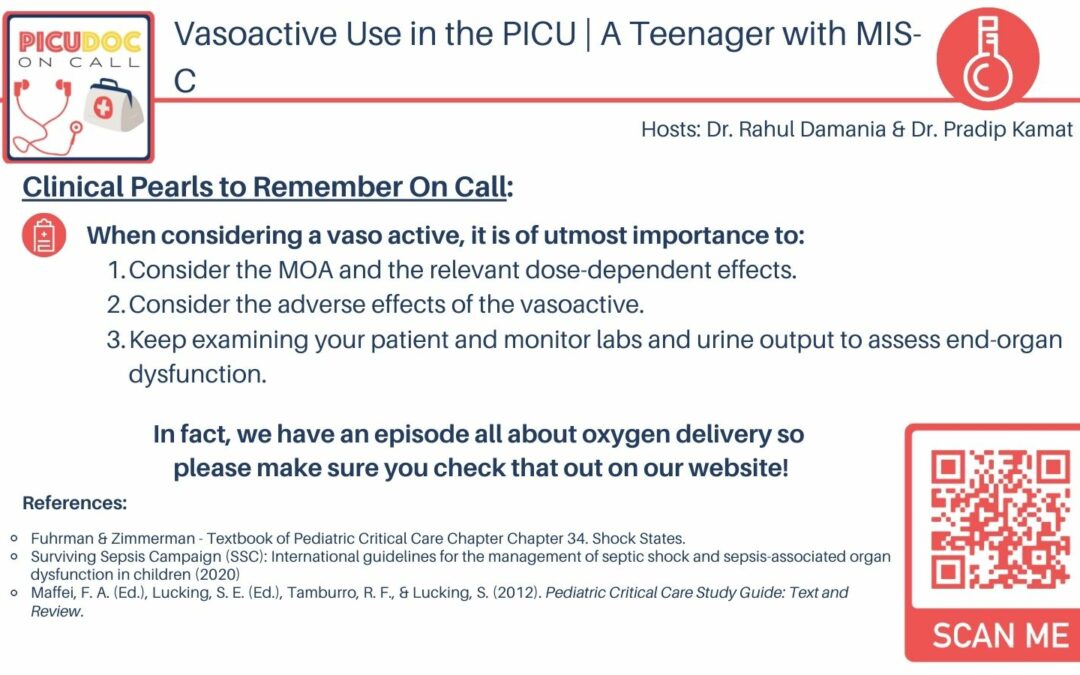Welcome to “PICU Doc On Call,” a podcast dedicated to current and aspiring intensivists. In this episode, Dr. Pradip Kamat and Dr. Rahul Damania discuss an interesting case of a 16-year-old male with high-grade fever and abdominal pain. The patient also presents with a rash and other concerning symptoms, leading to urgent medical attention. They provide a summary of the key elements from the case, including vital signs, physical examination findings, and laboratory and imaging results.
Dr. Kamat then shares his thought process regarding the working diagnosis for this patient, considering several possibilities such as severe bacterial infection, atypical appendicitis or cholecystitis, toxic shock syndrome, and systemic inflammatory processes like Multisystem Inflammatory Syndrome in Children (MIS-C) and atypical Kawasaki disease.
Moving on to the topic of vasopressors, Dr. Damania explains the importance of understanding how these medications work and their specific pharmacological properties. They discuss the classification of shock as cold or warm and the limitations of relying solely on clinical signs to categorize septic shock in children.
They highlight the challenges in selecting the appropriate vasopressor, such as a lack of standardization in clinical examination and individual variability in response to medications. They emphasize the need for a comprehensive approach when evaluating and managing pediatric shock patients, considering multiple factors beyond traditional bedside signs.
The hosts then engage in a rapid review of pressors, starting with a multiple-choice question regarding the choice of vasoactive infusion for a patient with toxic shock syndrome. They discuss the pros and cons of using norepinephrine (NE) in distributive shock and highlight its vasoconstrictive effects, inotropic activity, and potential side effects.
They proceed to compare NE with epinephrine, explaining the differences in their actions on adrenergic receptors and their effects on various circulations. They mention that epinephrine acts on all adrenergic receptors and has hemodynamic and metabolic effects, redirecting cardiac output and increasing myocardial oxygen demand.
Lastly, the hosts touch on phenylephrine, a vasopressor that acts on the alpha-1 receptor and elevates systemic vascular resistance (SVR) and pulmonary vascular resistance (PVR). They stress the importance of securing central line access when administering vasopressors to avoid harm to peripheral and systemic tissues.
In conclusion, this episode provides valuable insights into the diagnosis and management of a complex pediatric case involving high-grade fever, abdominal pain, and shock. The hosts also offer a rapid review of common vasopressors, highlighting their mechanisms of action, pros, and cons.

